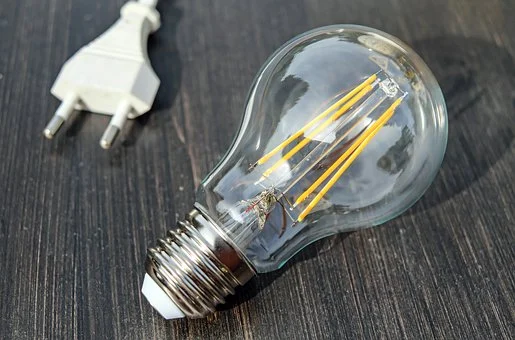可再生能源真的能取代化石燃料吗?
可再生能源真的能取代化石燃料吗?
As global temperatures and energy demand rise simultaneously, the search for sustainable fuel sources is more urgent than ever. But how can renewable energy possibly scale up to replace the vast quantities of oil and gas we consume?
随着全球气温和能源需求的同时上升,寻找可持续的燃料来源比以往任何时候都更加紧迫。但是,可再生能源如何能够大到可以取代我们消耗的大量石油和天然气呢?
Plant power is a significant piece of the answer, says Purdue scientist Maureen McCann.
普渡大学的科学家莫林·麦肯说,植物能源是个不错的答案。

“Plants are the basis of the future bioeconomy,” she says. “In my mind, building a sustainable economy means we stop digging carbon out of ground and begin to make use of one and a half billion tons of biomass available in the U.S. on an annual basis. That's the strategic carbon reserve that we need to exploit in order to displace oil.”
“植物是未来生物经济的基础,”她说。“在我看来,建设可持续经济意味着我们停止从地下挖掘碳,并开始利用美国每年15亿吨的生物质。这就是我们为了取代石油而需要开发的战略碳储备。”
McCann is a professor of biological sciences, former director of the Energy Center at Purdue’s Discovery Park, and president-elect of the American Society of Plant Biologists. She has spent her academic career looking at plant cell walls, which contain some of the most complicated molecules in nature. By studying a wide range of plants — from poplar trees to zinnias — her lab has characterized hundreds of plant genes and their products in an effort to understand how they all interact and how they could be manipulated in advantageous ways.
麦肯是生物科学教授,普渡大学发现公园能源中心前主任,美国植物生物学家学会当选主席。她在学术生涯中一直在研究植物细胞壁,其中包含自然界中一些最复杂的分子。通过研究从杨树到百日菊等一系列植物,她的实验室对数百种植物基因及其产物进行了表征,试图了解它们是如何相互作用的,以及如何以有利的方式操纵它们。
The ethanol industry uses enzymes to break starchy corn kernels down into glucose molecules, which, in turn, are fermented by microorganisms to produce usable fuel. Many researchers have been working on the possibility of getting more glucose by breaking down cellulose — the primary fibrous component of all plant cell walls — which is much more abundant than starch. However, McCann says their methods might be ignoring a valuable resource.
乙醇工业利用酶把淀粉玉米粒分解成葡萄糖分子,葡萄糖分子又被微生物发酵产生可用的燃料。许多研究人员一直在研究通过分解纤维素(所有植物细胞壁的主要纤维成分)获得更多葡萄糖的可能性,纤维素比淀粉丰富得多。然而,麦肯说他们的方法可能忽略了一个有价值的资源。
In addition to cellulose, cell walls contain many complex, poly-aromatic molecules called lignins. These compounds can get in the way of enzymes and catalysts that are trying to access cellulose and break it down into useful glucose. As a result, many labs have previously attempted to create plants that have more cellulose and fewer lignins in their cell walls.
除了纤维素,细胞壁还含有许多复杂的多环芳烃分子,称为木质素。这些化合物会阻碍酶和催化剂的作用,这些酶和催化剂试图获取纤维素并将其分解成有用的葡萄糖。因此,许多实验室先前曾试图创造出在细胞壁中含有更多纤维素和更少木质素的植物。

But it turns out lignins are important for plant development and can be a valuable source of chemicals. As director of Purdue’s Center for Direct Catalytic Conversion of Biomass to Biofuels (C3Bio), McCann collaborated with chemists and chemical engineers in maximizing utilization of available biomass, including lignins. A nine-year grant from the U.S. Department of Energy funded C3Bio researchers’ work toward using chemical catalysts to transform both cellulose and lignins into liquid hydrocarbons, which are more energy-dense than ethanol and fully compatible with engines and existing fuel infrastructure.
但事实证明,木质素对植物的生长非常重要,是一种很有价值的化学物质。作为普渡大学生物质能直接催化转化生物燃料中心(C3Bio)的主任,麦肯与化学家和化学工程师合作,最大限度地利用现有生物质能,包括木质素。C3Bio的研究人员使用化学催化剂将纤维素和木质素转化为液态碳氢化合物,这种化合物的能量密度比乙醇高,与发动机和现有的燃料基础设施完全兼容。
In light of lignins’ usefulness, McCann and her colleagues are interested in alternative biofuel optimization strategies that don’t involve reducing plants’ lignin content. For example, if the researchers can modulate the strength of the “glue” between plant cells, they can make it easier for enzymes to access cellulose and also reduce the amount of energy needed for shredding the plant material. Another approach involves genetically engineering living, growing plants to incorporate chemical catalysts into their own cell walls, which will help eventual breakdown be faster and more complete.
鉴于木质素的实用性,麦肯和她的同事对不涉及减少植物木质素含量的生物燃料优化策略很感兴趣。例如,如果研究人员能够调节植物细胞间“胶水”的强度,他们就能让酶更容易地接触到纤维素,同时还能减少粉碎植物材料所需的能量。另一种方法是通过基因工程改造活的、生长的植物,将化学催化剂融入它们自己的细胞壁,这将有助于最终更快更彻底地分解。
“In both cases, this work is a reflection of synthetic biology thinking,” McCann says. “We don't simply take what nature gives us; we think of ways to improve the performance of the biomass using the entirety of the genetics toolkit.”
“在这两种情况下,这项工作都反映了合成生物学的思考,”麦肯说。“我们不是简单地接受自然赋予我们的东西;我们是想办法利用整个基因学工具箱来提高生物质的性能。”
- 频道推荐
- |
- 全站推荐
- 推荐下载
- 网站推荐


















